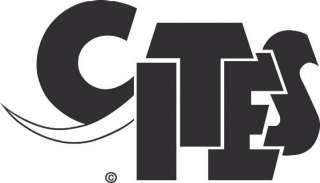Definition

The CITES Convention is an international agreement aiming to control the international trade of species of wild animals and plants so that such trade does not endanger their survival.
CITES, the Convention on International Trade in Endangered Species of wild fauna and flora, is an intergovernmental agreement signed on 3 March 1973 in Washington D.C. in the United States between 80 countries of the International Union for the Conservation of Nature. This convention is also known under the name of the Washington Convention. Other countries have joined it since it was created. The European Union (EU) has adopted CTIES and it is mandatory since 1984. In 2016, 183 countries have adhered to the CITES convention.
Related products
Today, the CITES Convention provides various degrees of protection to more than 35,000 species of plants and animals.
The Convention regulates the trade of live or non-living animals and plants but also the parts or products from these species (for example ivory).
The species covered by the CITES Convention are listed in three Appendices according to the degree of protection that they need:
- appendix I includes species threatened with extinction. The international trade of these species is prohibited, with some exceptions
- appendix II includes species that are not directly threatened with extinction, but the trade of which must be controlled to prevent exploitation that is incompatible with their survival
- appendix III includes species that are protected in at least one country and for the protection of which these countries have requested the help of other stakeholders of the CITES Convention for monitoring of their trade.
In the European regulation, appendices are named A, B, C. They include more or less the same species as the CITES appendices except for indigenous specices of the EU where protection may be higher.
Obligations and controls
The CITES Convention imposes controls on the international trade of specimens of certain species. All import, export, re-export, transit and intra-EU circulation of species covered by the CITES Convention is subject to authorization in a permit system.
Related procedures
The following procedure described on the Guichet.lu website allows to make requests for CITES permits from the competent Luxembourg administration depending on the type of goods (animal or plant):
Related organizations
At the national level, each country creates a management authority and a scientific authority that manage the application and the control of the convention.
In Luxembourg, the competent authority for the application of the convention and the related European regulations is the Ministry of Sustainable Development and Infrastructure (MDDI). The management authority acting under the MDDI includes members of different administrations for the establishment of permits and the Customs and excise administration for controls.
Two government agencies are in charge of issuing CITES permits.
- the Administration of Agricultural Technical Services (ASTA) is responsible for plants
- the Administration of Veterinary Services (ASV) is responsible for animals.
Context
It is estimated that the international trade of wild species amounts to several billion euros per year and affects hundreds of millions of specimens of plants and animals. It covers a very large range, from living species to the vast range of derivative products such as foodstuff, exotic leather articles, musical instruments in wood, exotic wood for furniture, etc.
The degree of exploitation of some species is very high, and their trade, combined with other factors such as the destruction of their habitats, may reduce their populations to a level near extinction.
The existence of an agreement ensuring sustainable trade at an international level is an important element for the protection of these species.
The CITES Convention enables its ratifying countries to contribute to the protection of threatened species of wild fauna and flora by translating these provisions into national laws.


